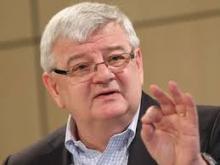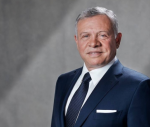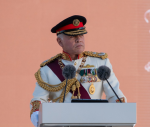You are here
How the EU must change
May 29,2022 - Last updated at May 29,2022
BERLIN — Though we still do not know when, and, more importantly, how, Vladimir Putin’s war of aggression in Ukraine will end, it is already clear that the conflict will dramatically transform the European Union.
The EU was Western Europe’s answer to the explosive violence of the two world wars, which were themselves the products of industrialisation and nationalism from the nineteenth century onward. These historical processes led to the complete destruction of the traditional European order. After World War II, the European continent came to be dominated by two non-European powers: The United States and the Soviet Union. Because these two powers’ material and ideological interests were impossible to reconcile, a decades-long nuclear-arms race and Cold War ensued.
Immediately after WWII, Western Europe’s economy was in tatters and it was militarily defenceless against a Soviet invasion. Without the US Marshall Plan and America’s guarantee of military protection, Western Europe would hardly have been able to survive.
NATO’s founding in 1949 ensured that the western part of the continent would remain safe from both Soviet encroachments and a reemergent, albeit partitioned, Germany. This arrangement then gave rise to the idea that a stable Western European order could be achieved through economic integration within a single market, collective institutions and a common legal system, eventually implying a complete integration of the states involved.
The aim was not only to overcome the socioeconomic and political causes of destructive nationalism, but also to ensure that Europe’s historical troublemaker and strongest economy, Germany, was fully and permanently brought into the fold. In the decades that followed, NATO and the EU, initially the European Coal and Steel Community and then the European Economic Community, became the respective military and economic pillars of European security and prosperity, and thus of the Western European order.
But with the end of the Cold War came new questions about what the European order would look like. The answer was that both Western European pillars, NATO and the EU, would grow to include the Central and Eastern European countries that qualified for membership. For their part, many of the former Soviet republics and Warsaw Pact members wanted a binding guarantee that the European order would not be revised by Russia.
NATO and EU membership thus brought the promise of collective security and a common market. The hope was to eliminate the last remnants of the old East-West confrontation, and to ensure a permanent peace through economic exchange and interdependence.
Under Putin, however, Russia has been pursuing a different kind of policy. It has sought to reestablish its status as a global power by laying claim to more and more “Russian earth”, which implies a reversal of the post-Soviet order. Looking to the past rather than the future, Putin wants to restore the old Russian empire.
As Ukrainians increasingly expressed their desire to integrate with the West, Putin took steps to deny their freedom and Ukraine’s sovereignty. In 2014, he annexed Crimea and ignited a low-burn war in Ukraine’s Donbas region. And now he has launched an all-out war of aggression, wrecking any chance for peaceful coexistence between Russia and the EU, at least as long as he remains in power. Geographic partition, enforced by nuclear blackmail, will once again prevail over economic exchange and cooperation.
The EU will now have to focus much more on security and geopolitical issues than it did in the past. Moreover, now that Sweden and Finland will join NATO, Austria, Ireland, Malta and Cyprus will be the only EU members that do not also belong to the alliance. Thus, the relationship between the two pillars of the European order will also change. EU members will have to increase their defence spending substantially as well as urgently shore up their contributions to NATO.
The EU will also confront increasingly high-stakes geopolitical challenges, as applications for membership by Ukraine, Georgia, and Moldova are already showing. Until now, the sole geopolitical instrument that the EU had at its disposal was the promise of full membership, and thus economic growth and prosperity. But that promise has turned out to be an illusion for Turkey and the Western Balkans.
Under its current institutional and legal framework, the EU can pursue its geopolitical interests only to a very limited extent, if at all. The EU of the future therefore will need a more flexible structure, with a quasi-confederative arrangement surrounding a federated core. Rather than requiring full membership or nothing at all, the EU could instead offer narrower access to the common market, common security, the EU legal community, the common currency, and so forth.
The EU cannot grow endlessly. But it does need to accept that its geopolitical interests extend much further than the instrument of full membership does. As long as authoritarian regimes pose a material threat, the EU, representing the economic and societal alternative, will become an increasingly significant force not just on the European continent but in the larger gray area to the east, where there is no clear-cut border with Asia.
Whatever happens in Ukraine, the situation demands a new structural flexibility and not rigid adherence to old, overstrained arrangements or promises that cannot be fulfilled.
Joschka Fischer, Germany’s foreign minister and vice chancellor from 1998 to 2005, was a leader of the German Green Party for almost 20 years. Copyright: Project Syndicate, 2022.













